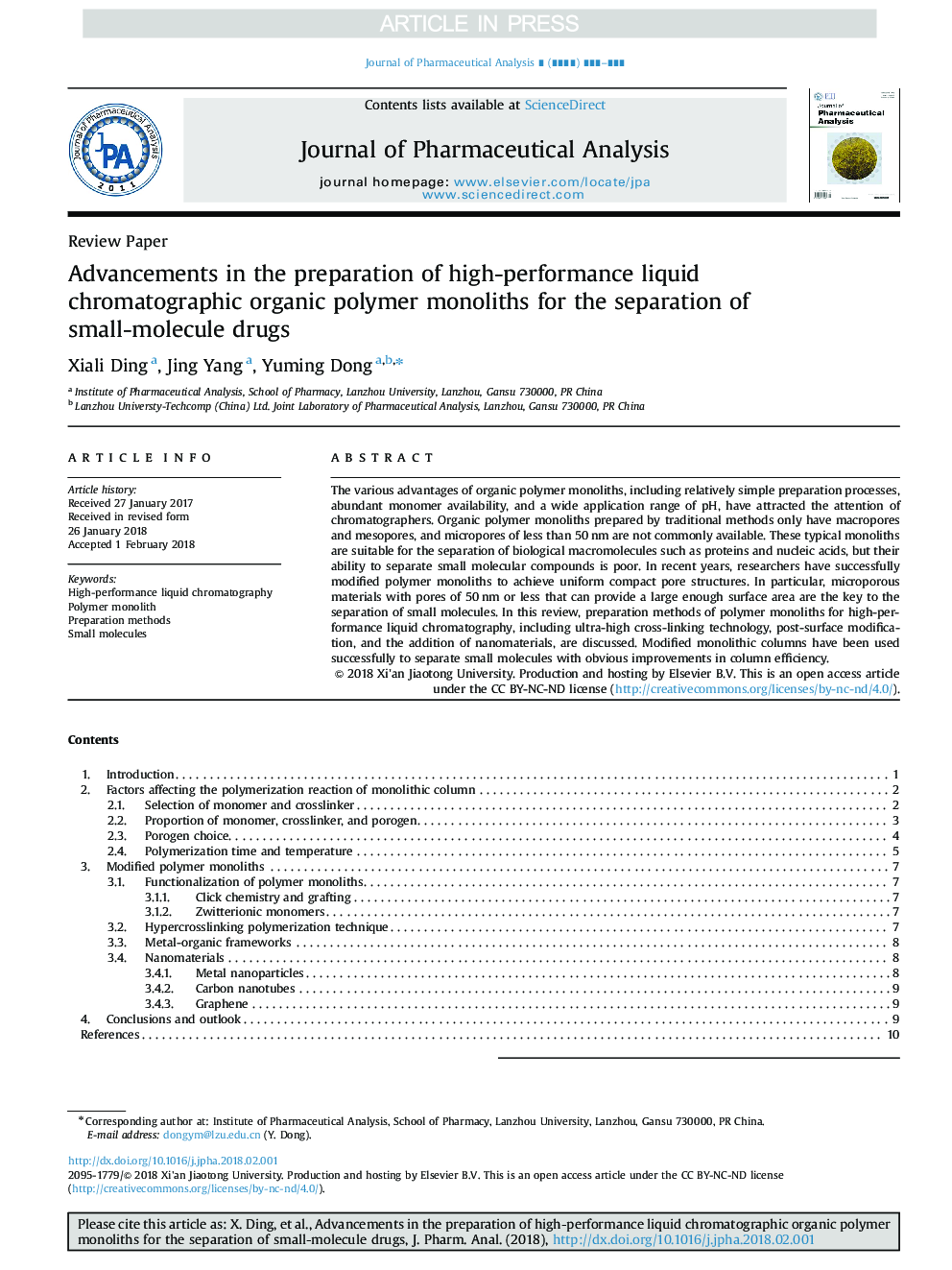| Article ID | Journal | Published Year | Pages | File Type |
|---|---|---|---|---|
| 8521080 | Journal of Pharmaceutical Analysis | 2018 | 11 Pages |
Abstract
The various advantages of organic polymer monoliths, including relatively simple preparation processes, abundant monomer availability, and a wide application range of pH, have attracted the attention of chromatographers. Organic polymer monoliths prepared by traditional methods only have macropores and mesopores, and micropores of less than 50â¯nm are not commonly available. These typical monoliths are suitable for the separation of biological macromolecules such as proteins and nucleic acids, but their ability to separate small molecular compounds is poor. In recent years, researchers have successfully modified polymer monoliths to achieve uniform compact pore structures. In particular, microporous materials with pores of 50â¯nm or less that can provide a large enough surface area are the key to the separation of small molecules. In this review, preparation methods of polymer monoliths for high-performance liquid chromatography, including ultra-high cross-linking technology, post-surface modification, and the addition of nanomaterials, are discussed. Modified monolithic columns have been used successfully to separate small molecules with obvious improvements in column efficiency.
Related Topics
Health Sciences
Pharmacology, Toxicology and Pharmaceutical Science
Pharmaceutical Science
Authors
Xiali Ding, Jing Yang, Yuming Dong,
